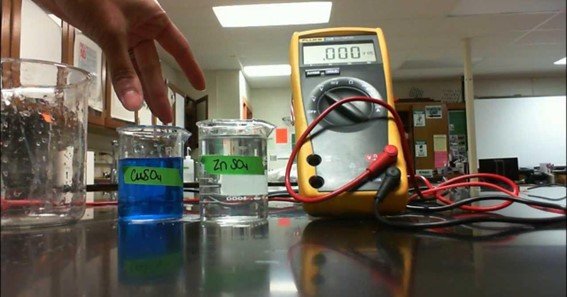Electrochemical cells are devices that convert chemical energy into electrical energy through controlled chemical reactions. These cells are the backbone of various technologies, from the simple batteries in remote controls to complex fuel cells powering electric vehicles. Understanding how electrochemical cells work is essential for appreciating the science behind much of the modern world’s energy needs.
Understanding Electrochemical Cells
Electrochemical cells consist of two electrodes—an anode and a cathode—immersed in an electrolyte solution. The anode is where oxidation occurs (loss of electrons), while the cathode is where reduction occurs (gain of electrons). The chemical reactions at these electrodes cause electrons to flow from the anode to the cathode through an external circuit, generating an electric current.
There are two main types of electrochemical cells:
- Galvanic (Voltaic) Cells: These cells generate electricity spontaneously through redox reactions. A common example is the standard alkaline battery, which powers devices like flashlights and remote controls. In a galvanic cell, the energy released during the spontaneous redox reactions is harnessed as electricity.
- Electrolytic Cells: Unlike galvanic cells, electrolytic cells require an external power source to drive non-spontaneous chemical reactions. These cells are used in industrial processes such as electroplating, where a metal is coated onto a surface, and in the production of chemicals like chlorine and sodium hydroxide.
How Do Electrochemical Cells Generate Electricity?
Electrochemical cells generate electricity through the following process:
- Electron Flow: In a galvanic cell, the anode undergoes oxidation, releasing electrons that travel through an external circuit to the cathode, where reduction occurs. This electron flow generates the electric current used to power devices.
- Ionic Movement: The electrolyte within the cell allows ions to move between the anode and cathode compartments, maintaining electrical neutrality and completing the circuit. This movement of ions is essential for the continuous operation of the cell.
- Energy Conversion: The chemical energy stored in the reactants is converted into electrical energy. This energy is then available to power a wide range of applications, from small household gadgets to large-scale industrial systems.
Applications of Electrochemical Cells
Electrochemical cells are used in various applications, including:
- Batteries: Batteries are a common application of electrochemical cells, providing portable power for electronics, vehicles, and backup systems.
- Fuel Cells: Fuel cells are a type of electrochemical cell that generate electricity by reacting hydrogen with oxygen, with water as the only byproduct. They are used in some electric vehicles and other clean energy technologies.
- Electroplating: Electrolytic cells are used to coat objects with a thin layer of metal, which is useful in industries ranging from jewelry making to automotive manufacturing.

FAQ
What is an electrochemical cell?
An electrochemical cell is a device that converts chemical energy into electrical energy through redox reactions involving an anode, cathode, and electrolyte.
How do electrochemical cells work?
They work by causing electrons to flow from the anode to the cathode through an external circuit, generating electricity. This electron flow is driven by chemical reactions at the electrodes.
What is the difference between a galvanic and an electrolytic cell?
A galvanic cell generates electricity from spontaneous chemical reactions, while an electrolytic cell requires an external power source to drive non-spontaneous reactions.
Where are electrochemical cells used?
They are used in batteries, fuel cells, electroplating, and various industrial processes.
Why are electrochemical cells important?
They are crucial for providing portable and reliable sources of electricity, powering everything from everyday electronics to cutting-edge clean energy technologies.










